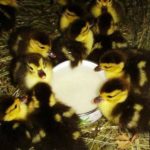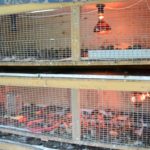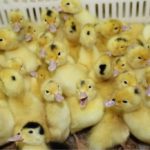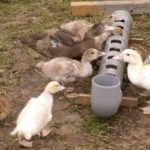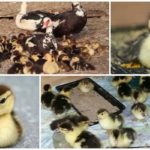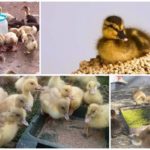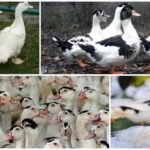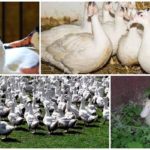Environmental conditions play a paramount role when raising chicks in a duck yard. Ensuring optimal temperature conditions is necessary for the harmonious development of ducklings and the gradual formation of offspring resistance to external factors. High temperatures are just as destructive to the brood as low temperatures. At each stage of growth of young animals, it is necessary to maintain the thermometer at certain values.
Table of required temperature for keeping ducklings
In the first days of life, ducklings that are vulnerable in the absence of a mother duck or hatched with a mother duck in the cold season are placed in a brooder. The design has the shape of a box and allows you to create a favorable microclimate for the chicks. The thermometer readings for day-old ducklings and chicks in the first week of life should be quite high, without sudden changes in values. It is necessary to provide the birds with warmth and avoid drafts and dampness.
For heating, incandescent lamps, special heat lamps, heating pads, and heaters are used. The devices are placed at a distance that ensures safety and the required level of heat.
Temperature conditions for raising ducklings of different ages:
| Age | Season autumn-winter | Season spring-summer | ||
| Temperature under the brooder, °C | Temperature in the room, °C | Temperature under the brooder, °C | Temperature in the duck house, °C | |
| Up to 7 days | 28-33 | 22-26 | 28-30 | 22-24 |
| 2 weeks | 23-25 | 20 | 21-23 | 20 |
| 3-4 weeks | 21-23 | 16-18 | 18-20 or without heating | 16-18 |
| 5-8 weeks | — | 14-17 | — | 14-17 |
You should focus on the readings of a thermometer installed at a height of 6-8 centimeters, which corresponds to the growth of ducklings. The behavior of the chicks is also taken into account: at low temperatures the brood crowds together, and at high temperatures it often approaches the water, is not interested in food, and characteristically opens its beak.
Hardening begins gradually, from a week of age. The temperature is reduced daily by 1 °C until optimal values of 22-24 °C are reached. Thermoregulation in duck offspring is established by 14-20 days of life. In the warm season, two-week-old ducklings can be left without additional heating; in the cold season, heating is completed later - at the age of 4-5 weeks.
It is recommended to transfer the brood from the brooder to a regular poultry house from the age of one month.By this time, the grown chicks become cramped in a small area. In the warm season, after 30-day-old young animals are moved into the poultry house, there is usually no need for additional heating, but in the autumn-winter period the temperature is maintained by installing heaters or heat lamps.
The air temperature in the poultry house where mature ducks are kept (from 50 days of life) should not fall below +8 °C.
What happens if you don’t comply with the temperature regime?
Violation of the temperature regime when raising ducks is fraught with serious consequences. In the cold, chicks quickly weaken, they become prone to illness, and their physical development is impaired. In an attempt to keep warm, the ducklings huddle together and can crush each other.
Excessive heating also has negative consequences. The ducklings are not active, eat poorly and grow slowly. Pampered in the warmth, chicks have difficulty adapting to normal conditions. A weak degree of resistance of an untrained organism becomes the cause of various diseases. Comfortable living conditions are evidenced by:
- mobility and curiosity of the brood;
- uniform distribution of chicks throughout the territory;
- interest in food and water;
- harmonious physical development;
- high growth rates.
In a favorable environment, young animals grow quickly. The weight of a day-old chick, equal to 48-50 grams, increases by the age of one month, on average, to 900 grams.
At what temperature can ducklings be released outside?
Fresh air and minimal restriction of mobility stimulate the growth and development of young animals. But you can release the brood outside if certain conditions are met. In the first week of life, ducklings are most susceptible to the influence of various factors.Until they reach the age of 7 days, it is recommended to keep the chicks under a brooder, maintaining optimal temperature and air humidity from 65% to 75%.
In the warm season and calm weather, ducklings can be accustomed to the street from the age of 10-14 days, limiting their time in the fresh air to daylight hours. For early release of young animals for walking, the air temperature must initially be at least 20 °C.
By the age of 30 days, the chicks become stronger. Month-old ducklings can be released outside during the cool season, but the air temperature should not be less than +14 °C. Full bathing has a beneficial effect on the development of duck offspring. Ducklings growing near a pond become strong, hardy and gain weight well. In the summer months, in warm weather, ducklings can be released for swimming from the age of one month.






